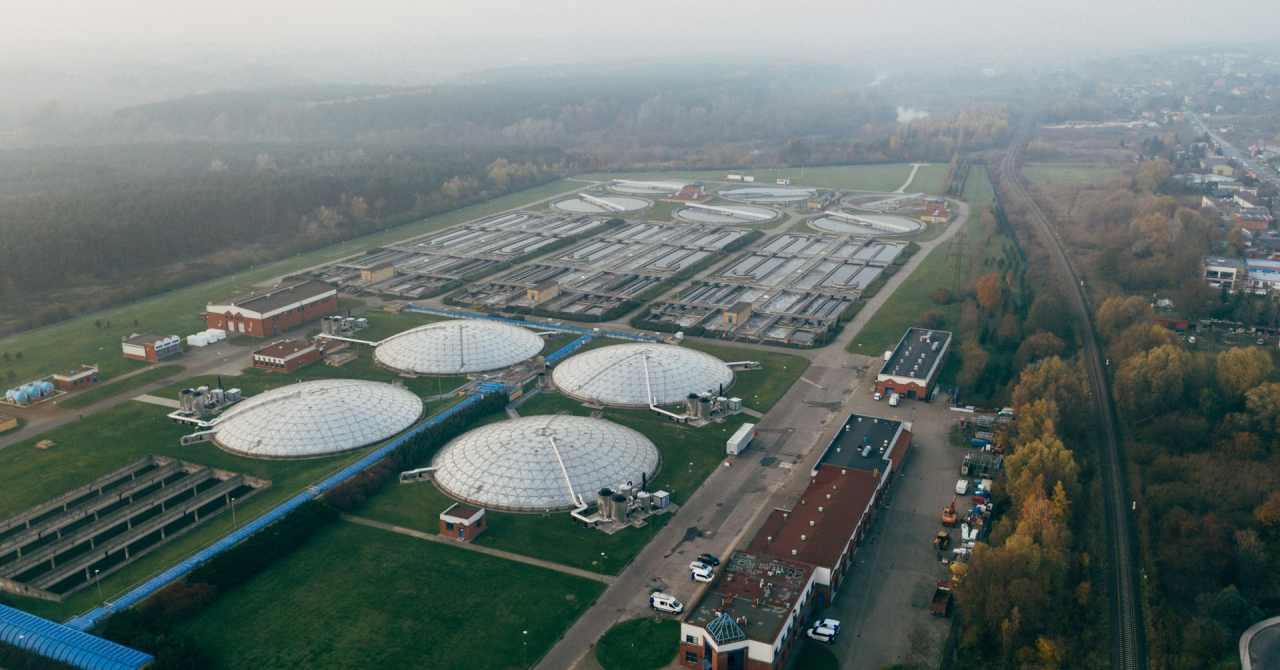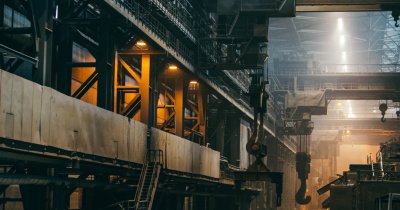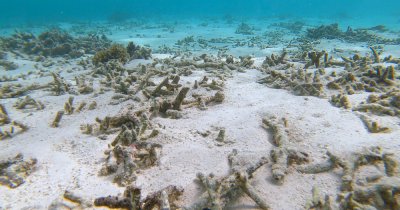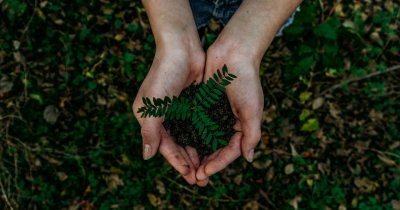While carbon capture technologies existed for decades at this point, it is now that the world is heavily invested in developing and adopting these solutions, as we find ourselves in a pretty harsh climate environment. Climate experts at EU's Copernicus Climate Change Service (C3S) recently confirmed that 2023 was indeed the hottest year in recorded history, claiming that recorded temperatures might have been higher than any point in the last 100.000 years.
Carbon sequestration existed ever since the first life forms on the planet developed, as they fed of the only source of nutrients they had at that time, carbon dioxide, just like the plants and trees are still doing to this day.
Choosing the best "weapon" in carbon capture will allow us to hit carbon neutrality the fastest by 2050 and will ensure that global temperatures will drop, as well.
Direct air carbon capture
One of the most well-known technological solutions we have is direct air carbon capture, which implies using vacuum technologies to pull carbon emissions from the atmosphere, while filtering the clean air. The captured carbon emissions can then be used for the manufacturing of various products, such as chemicals, or stored permanently underground.
Artificial carbon capture is also known as geological carbon capture, because usually it means storing the captured CO2 emissions in the ground or in the form of charcoal, as some startups recently started to approach the solution.
In the quest to look for new carbon capture solutions, Lehigh Engineering researcher Arup SenGupta developed a new way to air capture CO2 emissions and to store them in the ocean. The solution developed by Arup uses a copper-based polymeric filter that can convert carbon dioxide in sodium bicarbonate, which can then be released into the ocean, without the risk of disrupting ecosystems.
Furthermore, the scientist demonstrated that this solution has a carbon capture capacity 300% greater than that of traditional air capture techniques.

Arup SenGupta said that "I believe we have a responsibility to build direct air capture technology in a way that it can be implemented by people and countries around the world. Anyone who can operate a cell phone should be able to operate this process. This is not technology for making money. It's for saving the world."
The advantage to SenGupta's solution is that we can use the ocean's capacity to store the resulted sodium bicarbonate without the fear of affecting the ecosystems. "It has no adverse impact on the ocean whatsoever. It doesn't change the salinity at all", he added.
Martin Scherwath, a senior staff scientist with Ocean Networks Canada (ONC), said that "the question about the risk of pumping CO2 into the ocean crust is important. People on the west coast can have concerns when they hear that the CO2 will be injected under pressure into an area where there are natural earthquakes due to tectonic stresses. These results show that an additional risk is practically non-existent."
Biochar is another solution explored by the likes of Standard Biocarbon. The startup recently received a 5 million USD investment from sustainable infrastructure investor Nexus Development Capital to support the growth of its biochar production facility.
Known as biological charcoal, biochar is generated by heating biomass without oxygen, which creates a stable form of carbon, which is then buried underground to capture CO2 emissions.
Fred Horton, CEO and co-founder of Standard Biocarbon said that "this investment by Nexus Development Capital has enabled Standard Biocarbon to complete one of the most advanced and efficient biochar plants in the world. We’re seeing incredible interest in a consistent supply of our high-quality purpose-made biochar, which until now has been nearly impossible to find."
Company officials said that the recent investment will be used to scale operations at Standard Biocarbon's biochar production facility, located in Maine. Biochar production is expected to start in the first quarter of this year with an initial annual capacity of 12.200 cubic meters, which will also result in capturing around 3.000 tons of CO2.
Storing artificially-captured emissions
Capturing carbon emissions is one thing, but what about storing it? Saline aquifers are believed by some experts to be one of the ideal solutions when it comes to permanently storing captured CO2 underground. These geological formations are vast spaces of sedimentary rock, which are filled with salt water and they are believed to currently offer the most space for carbon deposits.

Citronelle Project in Alabama is one such geological formation that was used during a three-year old pilot in order to store 150.000 tons of captured carbon emissions.
Alternatively, carbon storage projects can also be implemented in depleted oil and gas reservoirs, but they should be at least one kilometer in depth for the solution to work properly and to prevent leaks or terrain deformations.
Natural carbon capture and storage
There are, as stated before, natural ways to get rid of carbon emissions and these have been working for millions of years at this point. Plants, trees and algae are some of the things that feed of carbon emissions and the big advantage when using these at-hand solutions is that they also take care of storing the emissions, not just capturing them.
So technically, Mother Nature gives us everything we need to fight plant-heating emissions, but this shouldn't be the only approach, some experts say.
Also known as "carbon sinks", natural forms of carbon capture are large areas where ecosystems capture carbon emissions so that plants and greenery can grow for the animals to consume, in turn. Forests, oceans and grasslands are some of nature's own capture-balancing solutions.
For these to work, however, we must make sure that we stop and prevent things like deforestations and that we plant new trees and favor the expansion of grasslands and wetlands. In this regard, BBC reports that Amazon deforestations halved in 2023, great news since that's one of the largest carbon sinks our planet has, which also regulates the world's temperature.
Birch and willow are considered by scientists to be two of the most effective trees at capturing carbon emissions and we can use their emissions-appetite to our advantage.
Trees are great not just for capturing and storing carbon emissions; they offer us clean air to breathe, cool the planet down, stabilize the ground, while also being the foundation of ecosystems.
The process is solar based, since algae capture solar energy, but also the pumps taking water from the ocean are gravity-powered, meaning that the process is sustainable and it also helps de-acidify the ocean water it does use.

After four years of trials at a three hectare research facility in Monaco, Brilliant Planet will use the funds from the 12 million dollar Series A funding to build a 30 hectare commercial demonstration facility while continuing to do research in London.
Which is the best long-term solution
To answer this question, we have to look at the pros and cons of both solutions. For artificial carbon capture, the advantages would be the multitude of solutions available on the market, the speed at which the technology advances and the fact that we have plenty of space underground and under the seas to store our emissions, at least for now. The drawbacks would be that direct air carbon capture is quite expensive and most artificial solutions for carbon solutions are more costly than the natural way to do it, while storing the emissions underground could prove dangerous at some point.
Turning to Mother Nature now, the solutions we have at our disposal are not as many and we can't really invent more along the way. However, what we have is good enough and if we preserve and expand on the forests, grasslands and wetlands that exist, this could prove to be the better way long-term, since it's not just about carbon capture. The benefits of adopting natural solutions have been stated above and include, but are not limited to, flood prevention and temperature regulation.
The problem here is that growing a forest or regenerating the environment takes time and we don't have too much of that anymore, so letting nature do its thing or helping it will be a long-term process and we need strong results now, as well.
The ideal solution is to combine both artificial and natural solutions for carbon capture and storage, to make sure we have the best chance at limiting the amounts of planet-heating emissions, while helping us and future generations breathe a cleaner air.
 Mihai - Cristian Ioniță
Mihai - Cristian Ioniță












Any thoughts?